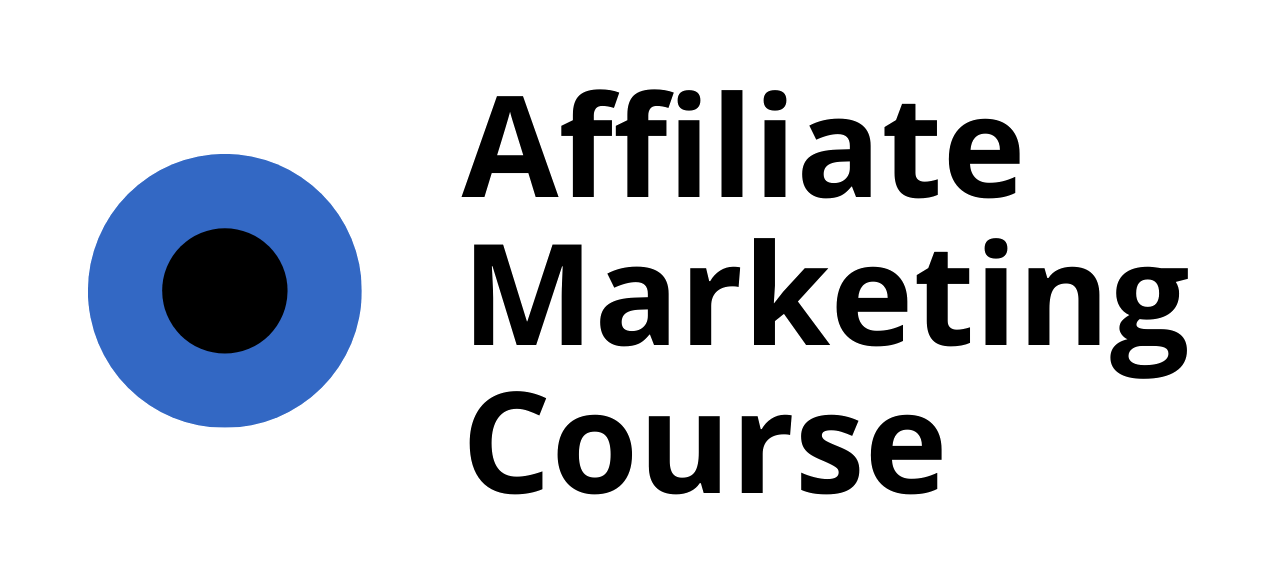Are you looking to boost your affiliate marketing efforts and unlock higher profitability in the dynamic digital landscape of 2025? Elevating your affiliate marketing ROI is not just about understanding the basics but mastering advanced strategies that align with the latest trends and consumer behaviors. Whether you’re a seasoned affiliate marketer or new to the game, this guide will walk you through proven techniques to maximize your returns, analyze performance metrics, and stay ahead of competitors. From optimizing campaigns to leveraging cutting-edge tools, we’ll explore everything you need to know to achieve sustained success in the ever-evolving world of affiliate marketing. Let’s dive into the key strategies, case studies, and actionable insights that will help you elevate your affiliate marketing ROI and leave your competition behind.
Key Takeaways
- Affiliate Marketing Drives High ROI in 2025: Leverage the performance-based model to achieve significant earnings, focusing on targeted traffic and strategic planning.
- Niche Focus for Profitability: Select a niche with high demand and low competition, creating valuable content to attract and retain an audience.
- Build a Targeted Audience: Utilize social media, blogs, and videos to drive traffic, fostering engagement and encouraging clicks on affiliate links.
- Promote Ethically and Transparently: Only endorse products you believe in, always disclose affiliate relationships, and maintain credibility with your audience.
- Invest in a Strong Technical Foundation: Start with a professional website optimized for SEO to enhance visibility and attract organic traffic.
- Diversify Revenue Streams: Join multiple affiliate networks and explore display advertising and sponsored content to stabilize income sources.
- Stay Ahead with Continuous Learning: Keep abreast of industry trends, use analytics tools, and refine strategies to stay competitive.
- Adapt to Evolving Trends: Embrace changes in digital marketing, such as video and mobile commerce, to enhance affiliate campaign effectiveness.
- Leverage Social Media Influence: Use platforms authentically to reach niche audiences and build trust through genuine endorsements.
- Prioritize Transparency and Trust: Maintain clear disclosures to protect your reputation and foster consumer confidence in your recommendations.

What is the Average ROI for Affiliate Marketing?
The average ROI for affiliate marketing is notably high, often exceeding 1400%. This means for every dollar invested, affiliates can expect to see $15 in returns. This impressive figure is driven by several factors, including commission structures, marketing strategies, and the effectiveness of promotional efforts.
To calculate ROI, you can use the formula:
ROI = ((Revenue generated – Costs incurred) / Costs incurred) × 100
For example, if an affiliate marketer invests $1,000 and generates $15,000 in revenue, the ROI would be:
((15,000 – 1,000) / 1,000) × 100 = 1400%
Key Factors Influencing Affiliate Marketing ROI:
- Niche Selection : Choosing a profitable niche with high demand and low competition significantly impacts ROI. Niches with established products and clear customer needs tend to yield better results.
- Traffic Quality : High-quality, targeted traffic is essential. Driving visitors who are interested in the product increases conversion rates and commissions.
- Conversion Rates : Optimizing landing pages, emails, and ads to convert visitors into buyers directly affects ROI. Higher conversion rates mean more revenue for the same amount of traffic.
- Commission Structures : Affiliates earn commissions based on sales made through their links. Programs offering higher percentages or bonuses can boost overall earnings.
- Ad Spend Efficiency : Effective use of budget ensures that advertising dollars generate maximum returns. Tools like Google Ads, social media platforms, and influencer networks can help maximize ad spend efficiency.
Challenges in Achieving High ROI:
While the potential for high ROI in affiliate marketing is appealing, it requires dedication and expertise. Building trust, driving organic traffic, and refining strategies take time and effort. However, with the right approach, affiliates can consistently achieve impressive returns.
By leveraging these strategies and continuously optimizing campaigns, affiliate marketers can achieve exceptional ROI, making it a highly rewarding venture for those willing to put in the work.
<h2(Return on Investment (ROI) in Affiliate Marketing)
In affiliate marketing, ROI stands for Return on Investment. It is a key metric used to evaluate the profitability and success of your affiliate marketing efforts.
How to Calculate ROI in Affiliate Marketing
- Define Net Profit: Subtract the total costs incurred (such as advertising fees, commissions, and operational costs) from the total revenue generated from affiliate sales.
- Calculate the Investment: Determine the total amount spent on affiliate marketing activities, including budgets for ads, affiliate commissions, and any other related expenses.
- Compute ROI Percentage: Divide the net profit by the total investment and multiply by 100 to express the result as a percentage.
For example, if your affiliate program generates $10,000 in revenue with a total investment of $5,000, your ROI would be ($10,000 – $5,000) / $5,000 * 100 = 100%. This indicates a complete return on your investment.
Why Track ROI?
Tracking ROI helps you assess the effectiveness of your affiliate marketing strategy. A high ROI indicates a profitable program, while a low ROI may suggest the need for optimization or better targeting.
Comparing ROI to Other Metrics
While ROI is essential, it’s often complemented by other metrics like Return on Ad Spend (ROAS). ROAS focuses on the revenue generated per dollar spent on ads, providing insight into the efficiency of your ad investments. Together, these metrics give a holistic view of your affiliate marketing performance.
Improving ROI
To enhance your ROI, focus on recruiting high-performing affiliates, optimizing your affiliate offers, and refining your targeting strategies. Regularly analyze your performance data to identify areas for improvement and allocate resources effectively.

Can You Make $100 a Day with Affiliate Marketing?
Yes, it is possible to earn $100 a day through affiliate marketing with consistent effort and the right strategies. Below are proven methods to achieve this goal:
1. Understand the Basics of Affiliate Marketing
Affiliate marketing involves promoting products or services and earning a commission for each sale made through your unique referral link. To succeed, you need to choose the right affiliate programs, drive targeted traffic, and convert that traffic into sales.
2. Key Strategies to Earn $100 Daily
a. Build a Strong Traffic Source
- Social Media Platforms : Promote affiliate links on platforms like Instagram, Pinterest, and TikTok where visual content performs well.
- Email Marketing : Build an email list and send regular newsletters with affiliate offers.
- Content Creation : Create valuable content around trending topics in your niche to attract organic traffic.
b. Choose the Right Affiliate Programs
- High-Commission Programs : Look for affiliate programs offering competitive commissions, such as Amazon Associates (up to 10%), ClickBank (usually 50-75%), and ShareASale.
- Niche-Specific Affiliates : Join programs tailored to your audience’s interests, such as fitness, tech, or finance.
c. Optimize Your Landing Pages
- Use eye-catching headlines and subheadings to grab attention.
- Include clear CTAs (Call-to-Actions) like “Shop Now” or “Get Started.”
- Ensure your landing pages load quickly and are mobile-friendly.
d. Leverage Social Media
- Post regularly and engage with your audience to build trust.
- Use hashtags strategically to increase visibility.
- Run targeted ads to reach your ideal audience.
e. Utilize Email Marketing
- Send personalized emails with exclusive deals and discounts.
- Segment your audience based on preferences for more relevant offers.
f. Invest in Paid Advertising
- Start with a modest budget on platforms like Facebook Ads or Google Ads.
- Target specific demographics and retarget visitors who showed interest in your products.
g. Stay Updated with Trends
- Keep an eye on industry news and updates to adapt your strategies.
- Experiment with new platforms and tools to stay ahead of the competition.
3. Tools and Resources
To streamline your efforts, consider using tools like:- WordPress for website management.- Awin or ShareASale for affiliate program tracking.- Canva for creating visually appealing content.
4. Track and Analyze Performance
- Use analytics tools to monitor traffic, conversions, and earnings.
- Adjust your strategies based on what works best for your audience.
By implementing these strategies and continuously refining your approach, you can consistently earn $100 a day or more through affiliate marketing.

Return on Investment (ROI) of Affiliate Marketing
The return on investment (ROI) for affiliate marketing can be substantial, offering a high potential for earnings due to its performance-based nature. Here’s a breakdown of factors influencing ROI:
- Initial Costs: Expenses such as website setup, domain registration, hosting, and advertising need to be considered upfront.
- Earnings Potential: Affiliates earn commissions on referred sales. Programs may offer varying percentages, with some offering higher initial rates and recurring commissions.
- Conversion Rates: The effectiveness of converting traffic into buyers significantly impacts ROI. Higher conversion rates reduce the required traffic for meaningful earnings.
- Average Order Value: Promoting higher-priced products increases individual earnings, balancing the need for volume.
- Time Investment: Success often requires consistent effort in content creation and audience engagement, potentially delaying initial returns.
- Scalability: Established systems allow for expansion through additional affiliates, product promotions, and improved targeting.
- Competition and Niche: Effectively competing in a niche can enhance standing, though saturation may pose challenges.
- Tracking and Analytics: Tools are essential for monitoring performance and optimizing strategies based on data.
Overall, affiliate marketing offers promising ROI for those adept at driving targeted traffic and converting it into sales, requiring strategic planning and continuous adaptation.
Can I Live Off Affiliate Marketing?
Affiliate marketing can be a viable income source, but it requires careful planning, dedication, and a strategic approach to succeed. Here’s a breakdown of the key considerations:
Understanding Affiliate Marketing
Affiliate marketing involves promoting products or services through affiliate links, earning a commission for each qualifying sale made through your referral links. While it’s possible to generate income, it’s not guaranteed and depends on factors like traffic, conversion rates, and niche selection.
Niche Selection and Content Creation
Choosing the right niche is crucial. Focus on areas you’re passionate about or have expertise in. Create valuable, engaging content to attract and retain an audience. Consistency is key—regularly updating your platform with high-quality content helps build trust and loyalty among followers.
Building an Audience
Driving traffic is essential. Utilize social media, blogs, and video platforms to share content. Engage with your audience to foster relationships and encourage them to click your affiliate links. Platforms like YouTube, TikTok, and Instagram offer unique opportunities due to their visual nature and algorithmic preferences.
Ethical Considerations
Always promote products you believe in. Transparency is vital—disclose your affiliate relationships to maintain credibility. Use disclaimers to inform your audience, ensuring they know you earn commissions through your links.
Legal and Ethical Compliance
Be aware of legal requirements, such as the FTC Disclosure Law in the U.S., which mandates clear disclosure of affiliate relationships. Maintain ethical standards by only promoting products you genuinely endorse.
Technical Setup
Set up a professional website or blog using cost-effective hosting solutions. Optimize your site for user experience and SEO to enhance visibility and attract organic traffic. Consider starting with free platforms before transitioning to self-hosted solutions.
Diversification and Monetization Strategies
Don’t rely on a single affiliate program. Diversify by joining multiple networks and explore additional revenue streams like display advertising and sponsored content. This reduces reliance on any one source and stabilizes income.
Continuous Learning and Adaptation
The affiliate marketing landscape evolves rapidly. Stay informed about trends, algorithm changes, and platform updates. Use analytics tools to track performance and adjust strategies accordingly. Invest in ongoing education to refine your skills and stay competitive.
Conclusion
Affiliate marketing offers a flexible income opportunity, but success demands dedication, strategic planning, and a commitment to growth. By focusing on your passions, building authentic connections, and staying adaptable, you can determine whether living off affiliate marketing is achievable for you.

Is Affiliate Marketing Still Worth It in 2025?
Yes, affiliate marketing remains a valuable and profitable strategy in 2025. Despite evolving digital marketing landscapes, affiliate marketing continues to offer significant benefits for both businesses and affiliates. Here’s why it’s still worth pursuing:
- Cost-Effective : Affiliate marketing operates on a performance-based model, meaning businesses only pay for results. This low-risk approach allows companies to scale efficiently without hefty upfront costs.
- Adaptability : Affiliate marketing has shown remarkable resilience and adaptability. With the rise of content marketing and influencer culture, affiliates can create engaging content that aligns with audience interests, driving organic traffic and conversions.
- Content Creation : Content marketing is a cornerstone of modern affiliate strategies. By producing valuable, shareable content around products, affiliates can establish authority and attract targeted audiences willing to engage with their recommendations.
- Social Media Influence : Leveraging social media platforms, influencers can effectively promote affiliate links, reaching niche audiences with authentic endorsements. This authenticity builds trust and drives measurable results.
- Technological Advancements : Sophisticated tracking tools and programmatic advertising enable precise measurement and optimization of affiliate campaigns, ensuring better ROI and improved targeting accuracy.
- Niche Markets : As competition intensifies, focusing on niche markets allows affiliates to stand out. Identifying underserved niches can open opportunities for unique solutions and specialized promotions.
- Transparency and Trust : Maintaining transparency in affiliate relationships is crucial. Clear disclosure practices protect the affiliate’s reputation and foster trust among consumers.
- Future Trends : With video marketing and mobile commerce gaining momentum, integrating these channels into affiliate strategies can further enhance effectiveness. Mobile-optimized affiliate links and video content can capture a broader audience.
In conclusion, affiliate marketing’s enduring appeal lies in its ability to adapt to changing trends while delivering measurable returns. By embracing innovation and maintaining ethical practices, affiliates can continue to thrive in the dynamic digital landscape of 2025 and beyond.




0 Comments